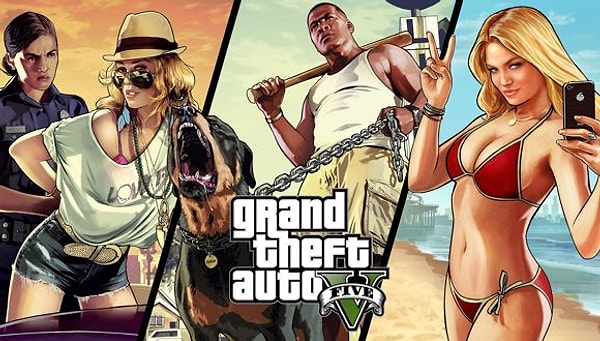Popular Now
Steal a Brainrot in Roblox has become a cultural flashpoint within the platform, not just because of its quirky aesthetic or collectible characters, but because of the intense player-versus-player economy it fosters. At its core, this game is built on the thrill and sting of stealing — the entire gameplay loop revolves around acquiring, displaying, and defending digital trophies called brainrots. This design choice has created a volatile mix of strategy, social tension, and monetization that sets it apart from most Roblox experiences. Instead of progress being a private achievement, it is public property, open to the envy and aggression of other players.
The Core Theft Loop: How the Economy is Structured
The foundation of Steal a Brainrot is simple but powerful: earn money, buy brainrots, put them on display, and prepare for the inevitable attempt by someone else to take them away. This loop is deliberately short and fast-paced, meaning you can experience both progress and loss in a matter of minutes. The game constantly keeps you in a heightened emotional state, where each session is filled with small victories and equally small heartbreaks.
Mechanically, this mirrors classic tycoon-style systems with conveyors, NPC work, and upgradeable income streams. However, unlike traditional tycoon games where your progress is safe, here everything you earn is under constant threat. That public vulnerability creates a high-stakes environment where the value of an item isn’t just in its rarity or stats, but in the drama it generates when stolen.
Monetization Layered on Theft — Technical and Ethical Tradeoffs
Steal a Brainrot uses a monetization model that blends free progression with purchasable advantages. Players can earn currency through gameplay, but premium items, powerful weapons, and admin-level powers are often locked behind Robux purchases. In a theft-based economy, these purchases translate directly into competitive dominance — the ability to steal more effectively or defend more completely.
While profitable, this approach carries risks. When paid power directly affects other players’ experiences, it changes the competitive balance of the game. In a community dominated by children, losing purchased items to better-equipped thieves can cause frustration and even anger. The result is a pay-to-escalate dynamic where spending real money isn’t about unlocking new content, but about overpowering other people.
Social Dynamics: Griefing, Influence, and Viral Meltdown Culture
Because theft is the primary interaction, the community often splits into aggressive players and frequent victims. For experienced players, the thrill lies in executing the perfect steal and showcasing it publicly. For newer or younger players, the same mechanic often results in frustration, especially when they lose valuable brainrots moments after earning them.
This visibility also fuels a viral culture. Content creators gravitate toward clips of emotional reactions — whether those are celebratory laughs from thieves or tears from victims. Over time, this feedback loop normalizes aggressive gameplay, encouraging others to imitate these behaviors for attention.
Design Challenges: Balancing Fun Versus Harm
Balancing a theft-focused game is delicate work. The stakes make the gameplay exciting, but they can also drive players away if losses feel too punishing. Developers can introduce safety nets like cooldown timers on theft, temporary protection for new acquisitions, or item insurance systems that allow partial recovery after a loss.
Without such measures, the game risks becoming an environment where only the most aggressive — or the most willing to spend — thrive. This can fracture the player base and limit long-term growth. The key challenge lies in preserving the tension of theft without turning it into pure griefing.
Player Strategies and the Evolving Meta
As the community matures, players have developed strategies to survive the theft economy. Defenders use decoys, maze-like base layouts, or trap systems to delay attackers. Others form protective alliances, agreeing to guard each other’s brainrots in exchange for mutual aid.
Attackers have their own meta: coordinated raids with friends, distraction tactics to lure defenders away, or rapid in-and-out theft runs that minimize exposure. Economic strategies vary too — some spread wealth across many low-value brainrots to make them less appealing targets, while others invest heavily in a single high-value item and fortify it heavily.
The Role of Alliances and Social Contracts
Friendships in Steal a Brainrot often revolve around mutual protection. Trusted allies can act as guards, standing watch while a player is away. In some cases, alliances extend into informal neighborhood treaties, where groups agree not to raid each other and instead focus on outsiders.
However, these alliances are fragile. Betrayals happen frequently, and when they do, they carry more sting than a standard theft because trust was part of the transaction. Such betrayals often become community legends, retold in Discord servers or YouTube videos, further reinforcing the game’s social drama.
Psychology of Loss and Reward
The emotional rollercoaster is central to why Steal a Brainrot holds attention. The elation of a successful theft is immediate and powerful, but so is the despair of losing a prized brainrot. Psychologists studying game loops note that this rapid cycle of highs and lows can be highly addictive, as players chase the next “big steal” or work to reclaim lost prestige.
However, the same intensity can also lead to burnout. Players who lose too much too often may rage quit entirely, especially if they feel the game’s systems are stacked against them due to monetization or skill gaps.
Economic Inflation and Brainrot Rarity
As the player base grows, more currency floods the economy, potentially devaluing common brainrots. This leads to inflation-like effects: what once felt like a big achievement becomes commonplace. To counteract this, developers may introduce limited-edition brainrots or seasonal exclusives to reignite excitement.
The rarity curve directly impacts theft behavior. Rare brainrots become prime targets, often drawing multiple thieves to a single base. This further increases the need for advanced defenses and strategic planning.
The Future of Steal a Brainrot’s Design
Looking ahead, the game’s sustainability depends on how developers handle its theft mechanics and economy. Adding layers like structured competitions, official tournaments, or co-op challenges could shift focus from constant theft to more varied goals. Expanding the customization of brainrots and bases might also create new forms of prestige that aren’t solely tied to theft.
If handled well, the game could evolve from a high-conflict novelty into a deeper social experience with competitive and cooperative layers. But if left unchecked, the same systems that fuel its virality could limit its longevity.
Conclusion
Steal a Brainrot’s success lies in the raw thrill of its theft economy, where every acquisition is a potential loss and every loss is a spark for revenge. Its fast emotional cycles, visible status symbols, and monetized escalation have created a unique space within Roblox. Yet, the same design choices that make it engaging also risk alienating players if the balance between fun and frustration tips too far. The game’s future will depend on whether it can evolve its systems to sustain both tension and fairness in the long term.















